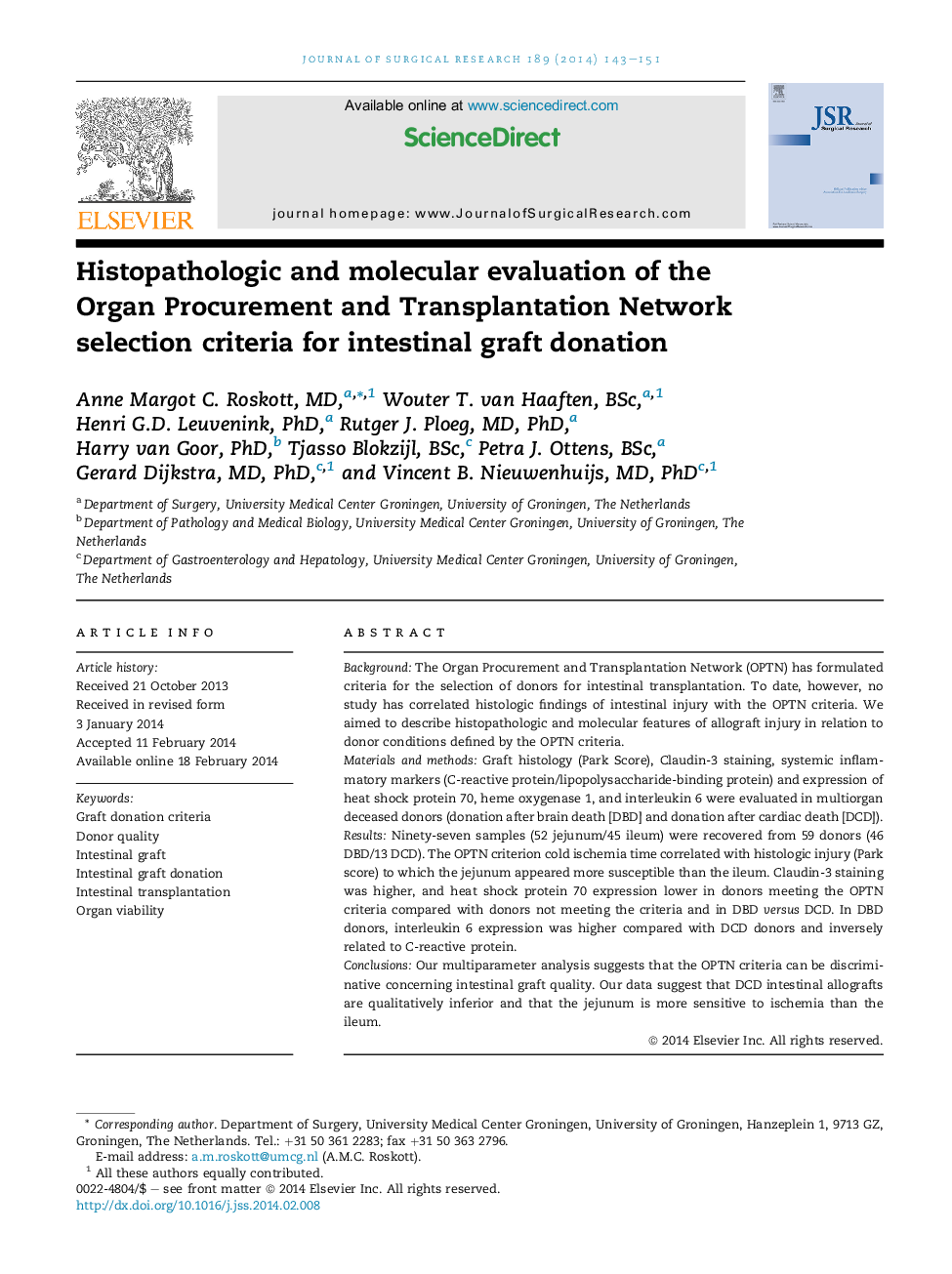| Article ID | Journal | Published Year | Pages | File Type |
|---|---|---|---|---|
| 4300140 | Journal of Surgical Research | 2014 | 9 Pages |
BackgroundThe Organ Procurement and Transplantation Network (OPTN) has formulated criteria for the selection of donors for intestinal transplantation. To date, however, no study has correlated histologic findings of intestinal injury with the OPTN criteria. We aimed to describe histopathologic and molecular features of allograft injury in relation to donor conditions defined by the OPTN criteria.Materials and methodsGraft histology (Park Score), Claudin-3 staining, systemic inflammatory markers (C-reactive protein/lipopolysaccharide-binding protein) and expression of heat shock protein 70, heme oxygenase 1, and interleukin 6 were evaluated in multiorgan deceased donors (donation after brain death [DBD] and donation after cardiac death [DCD]).ResultsNinety-seven samples (52 jejunum/45 ileum) were recovered from 59 donors (46 DBD/13 DCD). The OPTN criterion cold ischemia time correlated with histologic injury (Park score) to which the jejunum appeared more susceptible than the ileum. Claudin-3 staining was higher, and heat shock protein 70 expression lower in donors meeting the OPTN criteria compared with donors not meeting the criteria and in DBD versus DCD. In DBD donors, interleukin 6 expression was higher compared with DCD donors and inversely related to C-reactive protein.ConclusionsOur multiparameter analysis suggests that the OPTN criteria can be discriminative concerning intestinal graft quality. Our data suggest that DCD intestinal allografts are qualitatively inferior and that the jejunum is more sensitive to ischemia than the ileum.
